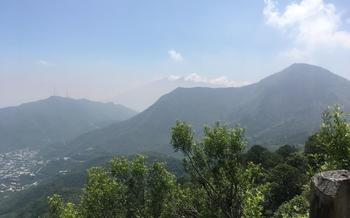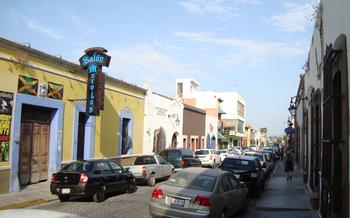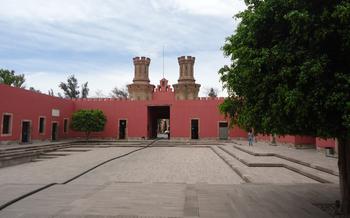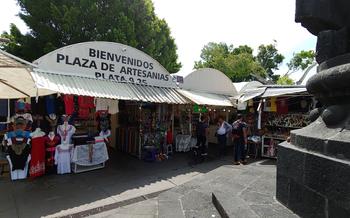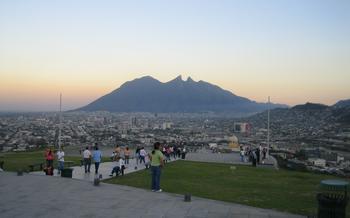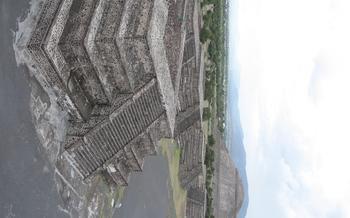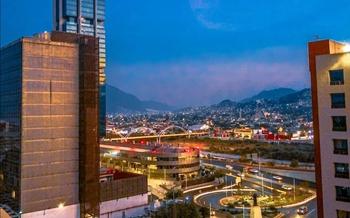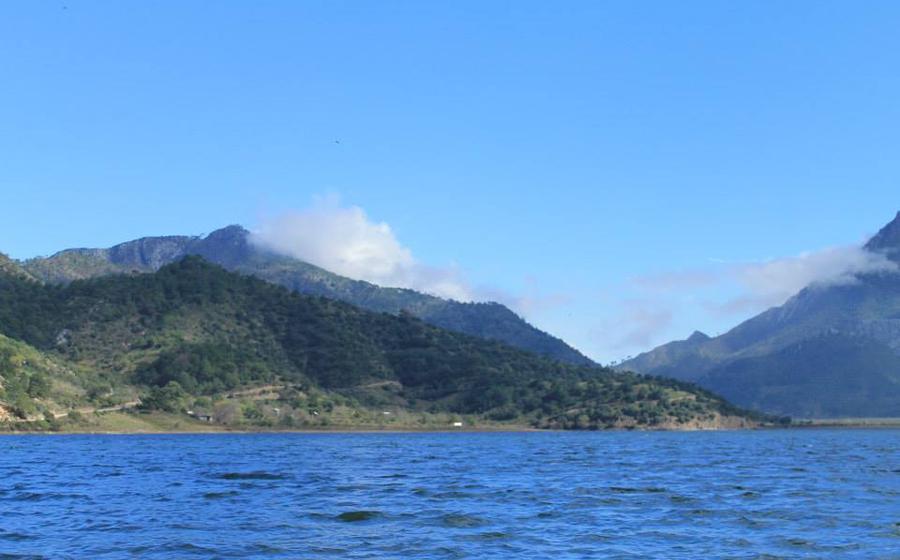
Parque Nacional Cumbres de Monterrey
- Parque Nacional Cumbres de Monterrey: A Natural Paradise
- Trails and Hiking Routes for All Levels
- Camping in the Park: A Unique Experience
- Wildlife Encounters in Cumbres de Monterrey
- The Majestic Cerro de la Silla: A Must-See Landmark
- Horseback Riding and Mountain Biking Adventures
- Picnicking and Barbecues in Cumbres de Monterrey
- Photography Opportunities for Nature Enthusiasts
- Environmental Education Programs for Visitors
- Visitor Centers and Information Points
- Accommodations Near Parque Nacional Cumbres de Monterrey
- Best Time to Visit the Park for Optimal Weather
- Insider Tip: Hidden Gems Within the Park
Parque Nacional Cumbres de Monterrey: A Natural Paradise
Nestled in the heart of the Sierra Madre Oriental mountains, Parque Nacional Cumbres de Monterrey beckons nature enthusiasts with its breathtaking landscapes, diverse wildlife, and an array of adventurous activities. Located just a short drive from the bustling city of Monterrey, this national park offers a refreshing escape into a world of rugged peaks, lush forests, and sparkling rivers, inviting visitors to reconnect with nature and embark on unforgettable outdoor experiences.
Established in 1939, Parque Nacional Cumbres de Monterrey encompasses over 177,000 acres of pristine wilderness, showcasing a variety of ecosystems that range from arid deserts to lush cloud forests. The park's diverse topography, sculpted by millions of years of geological forces, features towering peaks, deep canyons, and cascading waterfalls, creating a dramatic backdrop for exploration.
The park's climate, influenced by its altitude and topography, varies significantly throughout the year. Summers are generally warm and dry, with average temperatures ranging from 75°F to 85°F. Winters, on the other hand, can be chilly, with temperatures dropping below freezing at night. The rainy season, which typically lasts from June to September, brings much-needed moisture to the park, transforming its landscapes into a vibrant tapestry of green.
Trails and Hiking Routes for All Levels
With over 150 kilometers of well-marked trails, Parque Nacional Cumbres de Monterrey is a hiker's paradise catering to all levels of experience. Whether you're a seasoned trekker seeking a challenging ascent or a leisurely stroller looking for a scenic stroll, there's a trail tailored to your needs.
For those seeking an easy introduction to the park's natural wonders, the Paseo del Cedral trail, stretching 3 kilometers through a lush forest of cedar trees, is an ideal choice. The Sendero del Mirador, a 4-kilometer loop, takes you to a breathtaking viewpoint overlooking the iconic Cerro de la Silla, the park's most prominent landmark.
If you're up for a more strenuous challenge, tackle the 8-kilometer Pico Independencia trail, rewarding you with panoramic views from the highest point in the park. The 12-kilometer Cueva de la Virgen trail leads to a hidden cave adorned with ancient petroglyphs, offering a glimpse into the park's rich cultural heritage.
No matter your skill level, remember to wear comfortable hiking shoes, bring plenty of water, and be prepared for sudden weather changes.
Camping in the Park: A Unique Experience
Camping amidst the pristine wilderness of Parque Nacional Cumbres de Monterrey offers an unparalleled opportunity to immerse oneself in nature's tranquility. The park boasts several designated campgrounds, each offering unique experiences.
El Potrero Campground: Situated near the park entrance, El Potrero Campground is ideal for those seeking convenience and easy access to the park's trails. With basic amenities like restrooms and picnic tables, it's a great base camp for exploring the park's wonders.
La Estanzuela Campground: Nestled deep within the park, La Estanzuela Campground is a haven for those seeking solitude and adventure. Surrounded by towering peaks and lush forests, it offers a truly immersive camping experience. While more remote, it provides a sense of tranquility and closeness to nature.
Camping Etiquette: To ensure a harmonious and enjoyable camping experience for all, it's essential to adhere to proper camping etiquette. Respect fellow campers by keeping noise levels down, especially at night. Leave your campsite clean and free of trash, and always follow fire safety regulations.
Reservations: Camping reservations are highly recommended, especially during peak season, to secure your spot in the park's campgrounds. Advance planning will ensure a smooth and hassle-free camping experience.
Wildlife Encounters in Cumbres de Monterrey
Parque Nacional Cumbres de Monterrey is a haven for diverse wildlife, offering visitors the chance to witness a rich tapestry of species in their natural habitat. From majestic birds soaring through the skies to elusive mammals roaming the undergrowth, the park's biodiversity is a source of wonder and fascination.
Among the most iconic animals that call Cumbres de Monterrey home is the black bear, known locally as "oso negro". These shy and solitary creatures inhabit the park's dense forests, and while sightings are not guaranteed, encountering one of these magnificent animals is a truly unforgettable experience.
Birdwatching enthusiasts will be in their element within the park, as Cumbres de Monterrey is home to over 300 species of birds. From the vibrant colors of the painted bunting to the melodious songs of the rufous-capped warbler, the park's skies are filled with a symphony of avian life.
The park also provides refuge for a variety of reptiles and amphibians, including the Texas horned lizard, with its distinctive horns and spiky scales, and the Rio Grande leopard frog, known for its striking yellow and black markings.
To ensure responsible wildlife viewing, visitors are advised to maintain a respectful distance from animals, avoid disturbing their natural behavior, and never feed or approach them. By following these guidelines, visitors can help protect the park's delicate ecosystem and ensure that future generations can enjoy the same wildlife wonders.
The Majestic Cerro de la Silla: A Must-See Landmark
Geological Formation
Cerro de la Silla, or Saddle Mountain, is a magnificent geological formation located within the Parque Nacional Cumbres de Monterrey. It is one of the most recognizable landmarks in the region, thanks to its distinctive shape that resembles a saddle. This unique formation is the result of millions of years of erosion and geological processes that have shaped the mountain's contours.
Hiking Trails
Cerro de la Silla offers a variety of hiking trails that cater to different fitness levels and interests. Whether you're a seasoned hiker or a beginner looking for a leisurely stroll, there's a trail here for you. The trails wind through diverse ecosystems, from lush forests to rocky slopes, providing breathtaking views of the surrounding landscapes.
Climbing Routes
For those seeking a more challenging adventure, Cerro de la Silla boasts several climbing routes that range from beginner to expert levels. The mountain's steep slopes and varied terrain offer a thrilling experience for climbers of all skill levels. Whether you're looking to conquer your first climb or push your limits on a challenging route, Cerro de la Silla has something for everyone.
Panoramic Views
The summit of Cerro de la Silla offers some of the most stunning panoramic views in the region. From the top, you can admire the sprawling cityscape of Monterrey, the vast expanse of the surrounding mountains, and the shimmering waters of the Gulf of Mexico in the distance. The breathtaking views from Cerro de la Silla make it a must-see attraction for anyone visiting the Parque Nacional Cumbres de Monterrey.
Horseback Riding and Mountain Biking Adventures
Whether you prefer the thrill of galloping through rugged terrain on horseback or the challenge of navigating winding trails on a mountain bike, Parque Nacional Cumbres de Monterrey offers exhilarating experiences for outdoor enthusiasts.
Horseback Riding
Embark on a guided horseback riding tour and let experienced wranglers lead you through scenic trails, allowing you to immerse yourself in the park's breathtaking landscapes from a unique perspective. These tours are suitable for riders of all skill levels, ensuring a safe and enjoyable adventure for everyone.
Mountain Biking
For those seeking an adrenaline-pumping challenge, the park's extensive network of mountain biking trails offers a thrilling experience. From beginner-friendly paths to technical single-tracks, there's something for every skill level. Explore the park's hidden corners, conquer steep climbs, and enjoy exhilarating descents surrounded by stunning natural scenery.
Rental Options
To make your adventure more convenient, several rental shops within the park provide well-maintained horses and mountain bikes. Whether you prefer the traditional charm of horseback riding or the thrill of mountain biking, you can easily gear up and hit the trails without any hassle.
Guided Tours
If you're new to horseback riding or mountain biking or simply want to learn more about the park's history and ecology, consider booking a guided tour. Experienced guides will not only ensure your safety but also share fascinating insights into the park's natural wonders and cultural heritage.
Popular Trails
Some of the most popular trails for horseback riding and mountain biking include:
-
El Mirador Trail: This scenic trail offers panoramic views of the park and the surrounding mountains.
-
La Cascada Trail: This trail takes you past cascading waterfalls and lush vegetation, providing a refreshing escape from the heat.
-
El Chiflón Trail: This challenging trail is perfect for experienced mountain bikers, with steep climbs and technical descents.
Safety Precautions
To ensure a safe and enjoyable experience, remember to wear appropriate clothing and footwear, bring plenty of water, and always stay on designated trails. Helmets are mandatory for mountain biking, and it's advisable to wear protective gear for horseback riding as well.
Picnicking and Barbecues in Cumbres de Monterrey
Designated areas:
The park offers designated picnic areas equipped with tables, benches, and grills for visitors to enjoy al fresco dining. These areas are typically located near water sources and provide shade during the hot summer months. It is important to choose a designated area to minimize impact on the park's natural environment.
Picnic supplies:
Visitors should come prepared with their own picnic supplies, including food, drinks, plates, utensils, and napkins. It is also advisable to bring along a cooler to keep food and drinks cold, especially during the summer.
Barbecue grills:
Barbecue grills are available for use in designated areas within the park. Visitors are responsible for bringing their own charcoal or propane and cleaning the grills after use.
Fire safety regulations:
It is important to follow fire safety regulations when using barbecues in the park. Open fires are not permitted, and all fires must be contained within designated grills. Visitors should also be mindful of the potential for wildfires and take necessary precautions to prevent them.
Photography Opportunities for Nature Enthusiasts
With its diverse landscapes, abundant wildlife, and stunning geological formations, Parque Nacional Cumbres de Monterrey is a paradise for nature photographers. The park offers endless opportunities to capture breathtaking images, from sweeping vistas of the mountain ranges to close-up shots of rare and endangered species.
Scenic Landscapes: The park's rugged peaks, lush valleys, and sparkling rivers provide a backdrop for stunning landscape photography. Photographers can capture panoramic views from the many viewpoints scattered throughout the park, or venture off the beaten path to discover hidden gems like secluded waterfalls and pristine alpine lakes.
Wildlife Shots: The park is home to a diverse array of wildlife, including black bears, mountain lions, deer, and a variety of birds. With a bit of patience and luck, photographers can capture stunning shots of these elusive creatures in their natural habitat.
Time-lapse Photography: The park's ever-changing landscapes and dynamic weather conditions make it an ideal destination for time-lapse photography. Photographers can set up their cameras to capture the sunrise or sunset over the mountains, or document the movement of clouds and storms across the vast sky.
Tips for Capturing the Best Photos: - Use a variety of lenses: Bring a wide-angle lens for capturing sweeping landscapes, a telephoto lens for close-up shots of wildlife, and a macro lens for capturing the intricate details of flowers and insects. - Experiment with different angles: Don't be afraid to get creative with your compositions. Try shooting from different angles and perspectives to add interest and depth to your photos. - Use natural light: The best time to take photos in the park is during the golden hours of sunrise and sunset when the light is warm and diffused. - Be patient: Wildlife photography requires patience and perseverance. Be willing to wait for the perfect shot and don't be discouraged if you don't get it the first time.
Environmental Education Programs for Visitors
Parque Nacional Cumbres de Monterrey is not just a place for outdoor recreation; it also serves as a vital center for environmental education and conservation. The park offers a range of educational programs designed to foster a deeper understanding and appreciation for the park's unique ecosystems and biodiversity.
Guided tours led by experienced naturalists and educators provide visitors with insights into the park's geology, flora, and fauna. These tours are an excellent way to learn about the park's history, conservation efforts, and the importance of protecting its natural resources.
Interactive workshops and exhibitions held at the park's visitor centers offer hands-on experiences that engage visitors of all ages. These programs cover topics such as wildlife tracking, birdwatching, and sustainable living practices. Educational materials, videos, and interactive displays further enhance the learning experience.
The park also collaborates with local schools and organizations to conduct educational programs that focus on environmental conservation and stewardship. These programs aim to inspire the next generation of environmental advocates and encourage responsible behavior towards the park's ecosystems.
By participating in the park's environmental education programs, visitors gain a deeper understanding of the natural world and the importance of preserving its delicate balance. These programs empower visitors to become responsible stewards of the environment and advocates for conservation efforts both within the park and beyond.
Visitor Centers and Information Points
Within Parque Nacional Cumbres de Monterrey, visitors can find several well-equipped visitor centers and information points strategically located throughout the park to enhance their experience. These centers serve as a valuable resource for obtaining detailed maps, brochures, and expert guidance on available activities, trails, and points of interest. Knowledgeable and friendly staff is always ready to assist visitors with any inquiries, provide safety tips, and suggest tailored itineraries based on individual preferences and abilities.
The main visitor center, conveniently situated at the park's entrance, offers a wealth of information, including a comprehensive overview of the park's history, ecology, and recreational opportunities. Interactive exhibits and educational displays provide an engaging and immersive experience for visitors of all ages. Additionally, guided tour bookings can be arranged at the visitor center, ensuring that visitors have the opportunity to explore the park's hidden gems and learn more about its unique features from experienced naturalists.
Other information points are strategically placed at key trailheads and popular attractions within the park. These smaller facilities provide basic information, maps, and safety guidelines, allowing visitors to navigate the park independently while ensuring their safety and well-being. Whether seeking advice on choosing the most suitable trail or simply looking for tips on spotting wildlife, visitors can rely on the helpful staff at these information points for valuable insights and recommendations.
Accommodations Near Parque Nacional Cumbres de Monterrey
Camping under the Stars: For a more immersive experience, several campgrounds within the park offer a range of options, from basic tent sites to fully equipped cabins. Reservations are recommended, especially during peak season.
Hotel Comfort: If you prefer the convenience of a hotel, there are several options located just outside the park boundaries, offering easy access to the park's attractions.
Cozy Cabins: For a rustic yet comfortable stay, consider renting a cabin in the surrounding area. These cabins often come with amenities like fireplaces, kitchens, and private decks, providing a cozy retreat after a day of exploring the park.
Budget-Friendly Hostels: For budget-conscious travelers, there are a few hostels located near the park that offer dorm-style accommodations and shared facilities. These hostels provide a social atmosphere and a chance to meet fellow adventurers.
Local Airbnb Gems: Airbnb rentals offer a unique opportunity to experience the local culture while enjoying the comforts of home. Choose from a variety of listings, including charming apartments, cozy cottages, and spacious houses, all within a short distance of the park.
Best Time to Visit the Park for Optimal Weather
The ideal time to explore the Parque Nacional Cumbres de Monterrey is between October and April when the weather is at its most pleasant. During these months, temperatures range from a comfortable 15 to 25 degrees Celsius, making it perfect for outdoor activities like hiking, camping, and mountain biking. The skies are generally clear, with minimal rainfall, ensuring you can make the most of your time in the park without worrying about the weather.
While the park is accessible year-round, summer months can be scorching, with temperatures soaring above 30 degrees Celsius. The scorching sun and lack of shade on some trails can make hiking and other outdoor activities less enjoyable. Additionally, the rainy season from June to September brings unpredictable downpours that can disrupt your plans and make the trails muddy and slippery.
If you're looking to avoid the crowds and experience the park's tranquil beauty, consider visiting during the off-season from May to September. While the weather may be less predictable, you'll be rewarded with fewer visitors and a more intimate experience with nature.
Remember, the park's vast size and diverse landscapes mean that weather conditions can vary depending on the area you're visiting. It's always advisable to check the local forecast before your trip and pack accordingly to ensure a comfortable and enjoyable visit.
Insider Tip: Hidden Gems Within the Park
Secret Viewpoints: Venture off the beaten path to discover hidden viewpoints that offer breathtaking panoramas of the park's rugged landscapes. Climb to the summit of El Mirador del Águila for a bird's-eye view of the surrounding peaks and valleys.
Underrated Trails: Explore lesser-known trails to escape the crowds and immerse yourself in the park's tranquil wilderness. The Sendero del Venado winds through a dense forest, leading to a secluded waterfall.
Local Culinary Delights: Indulge in the flavors of local cuisine at the park's hidden culinary gems. Sample traditional dishes at the rustic El Sabor de las Montañas restaurant, known for its mouthwatering barbacoa and handmade tortillas.
Off-the-Beaten-Path Adventures: Embark on off-the-beaten-path adventures to discover the park's hidden secrets. Explore the mysterious Grutas de García caves, with their intricate stalactites and stalagmites. Kayak through the tranquil waters of the Presa de la Boca dam, surrounded by stunning mountain scenery.

